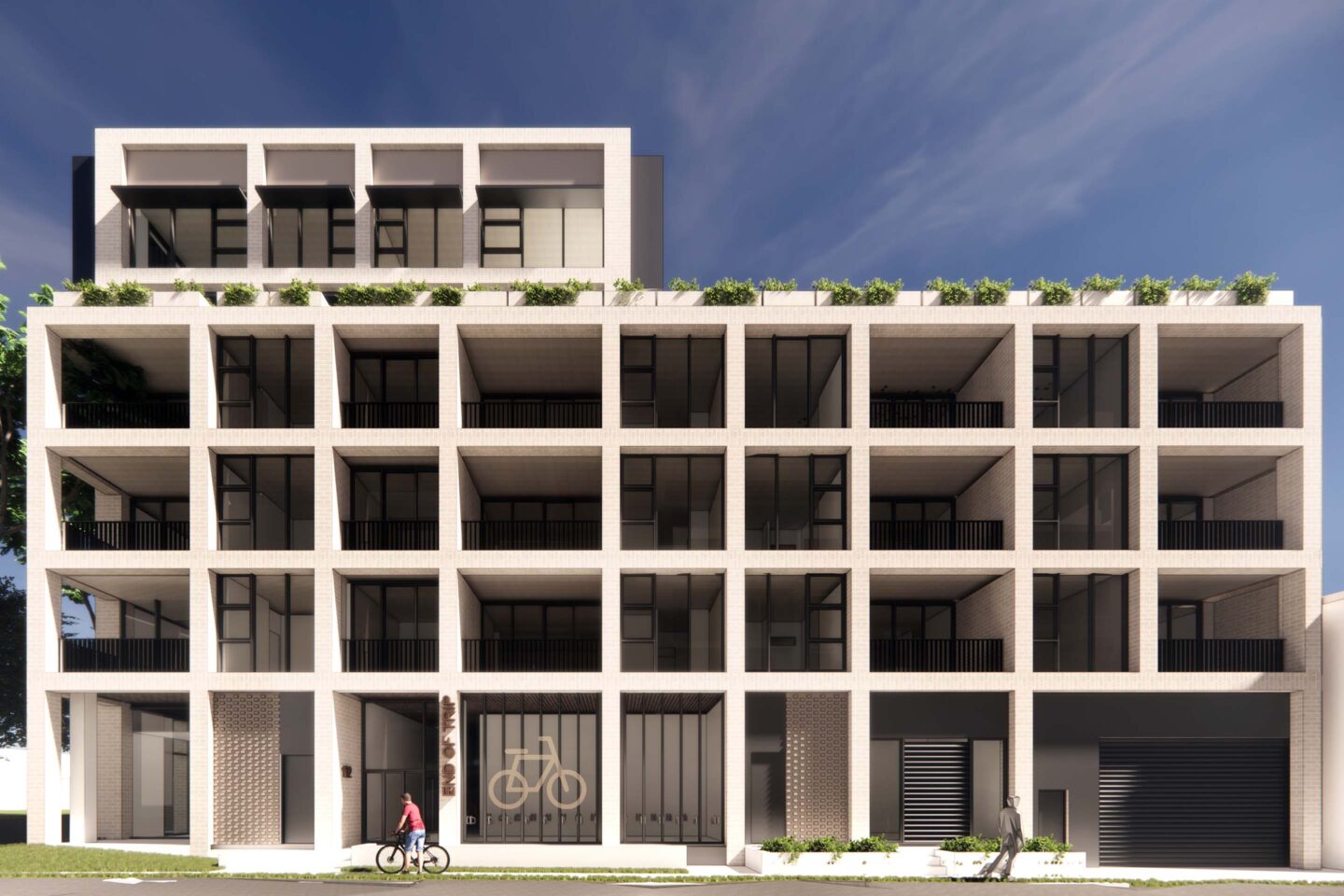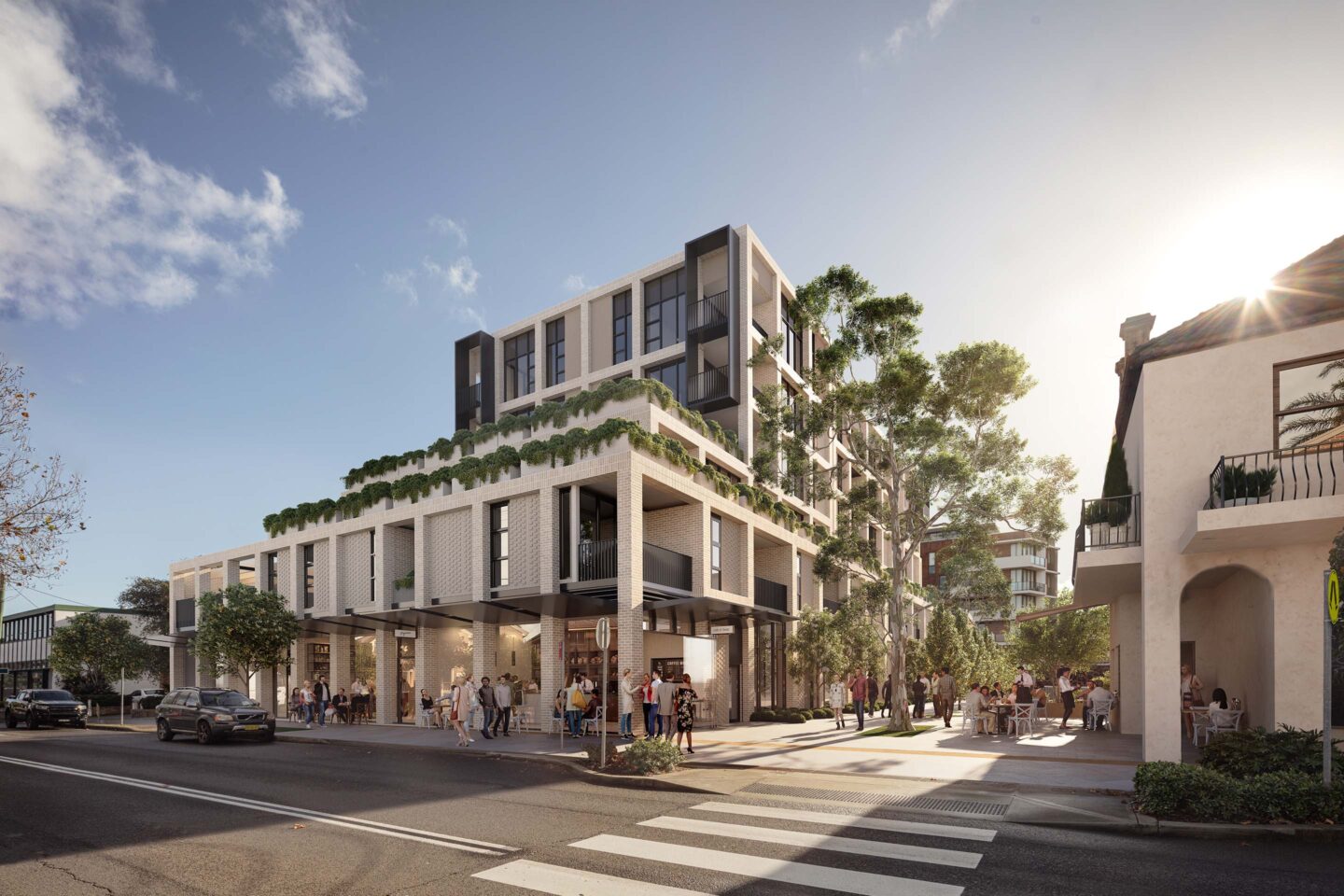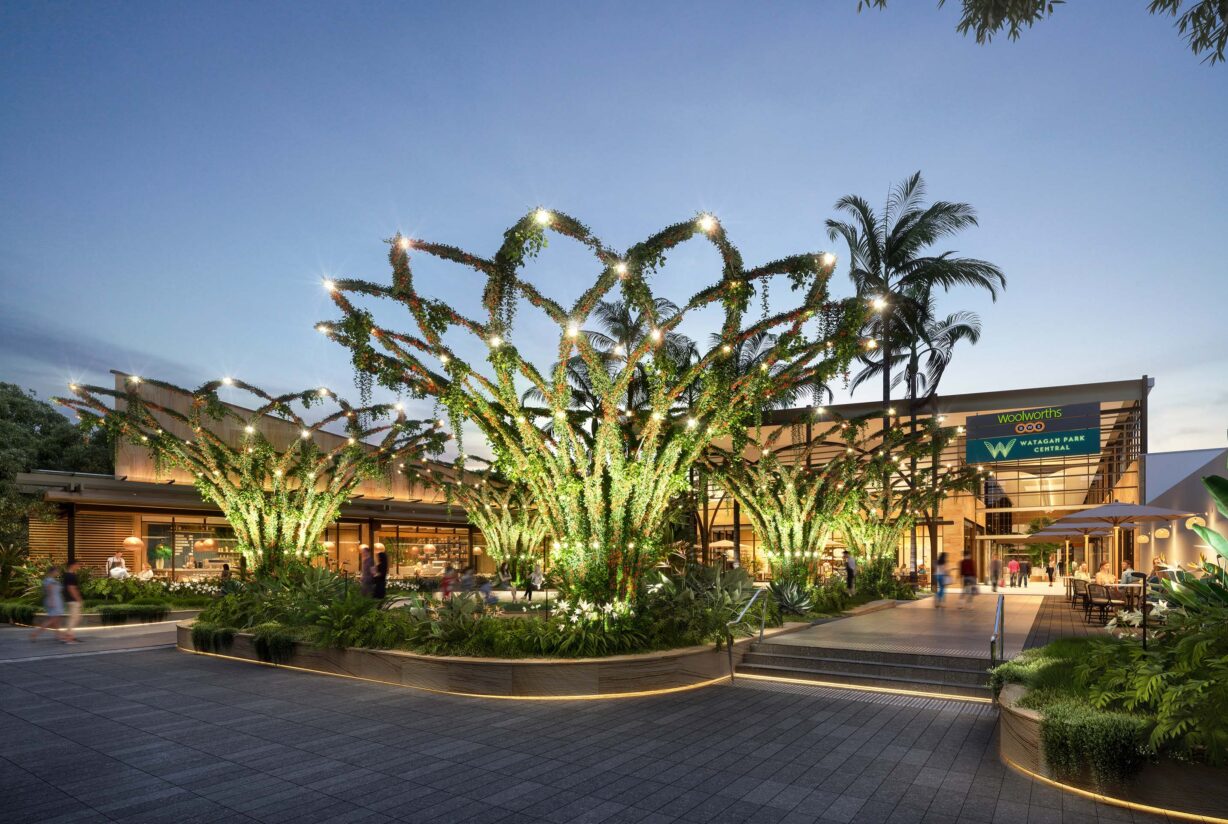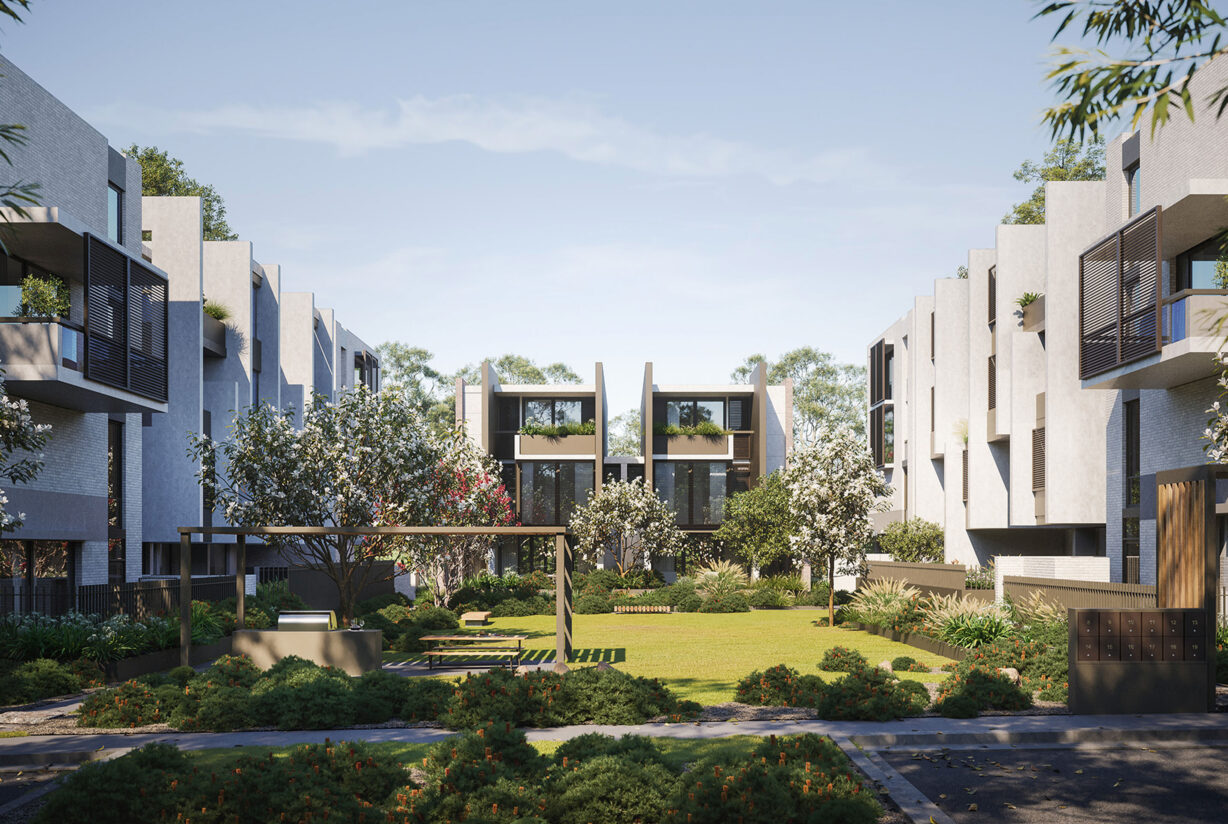

AJC Presents Redesign of Botany Road Development, Elevating Urban Living Standards
August 2024
AJC Architects are proud to unveil, on behalf of their client APKC Pty Ltd, their latest design for a landmark mixed-use development at 1611 Botany Road, Botany. This ambitious project seamlessly blends modern architectural excellence with a deep respect for the area’s heritage and urban context, promising to significantly enhance the local streetscape and public domain.
High-Quality Urban Design
AJC has thoughtfully addressed a series of challenging site constraints through the design of the building’s form and aesthetics, effectively managing the bulk and scale of the development. This approach aligns with Council’s vision for the revitalization of the Botany Town Centre, an area transitioning from industrial to mixed-use and high-density residential. The project will introduce a new landscaped pedestrian through-site link along Lenthen Lane, connecting residential apartments around Tannery Park to bus services and new neighborhood shops and cafes on Botany Road. The laneway frontage will feature a series of two-storey SOHOs (small office/home offices) designed as flexible live-work commercial spaces. These are intended to attract sole practitioners, artists/makers, and boutique retailers, ensuring vibrant street-level activity. The residential apartment entries open onto Lenthen Lane and are designed as double-volume porch spaces, adding visual interest to the laneway façades.
Enhancing Public Spaces
The project will significantly improve public and communal spaces, enhancing pedestrian accessibility and connectivity. The pedestrian through-site link on Lenthen Lane will be integrated with the future public domain plans for the Botany Town Centre. This link will enhance the public realm with wider footpaths, enabling substantial street planting to create an urban tree canopy. Along Madden Close, buildings will be set back to provide new footpaths and deep soil landscaping, dedicated for public use and benefit. On Botany Road, new footpaths will be enhanced with granite paving, street furniture, and tree planting.
Respecting Heritage Context
AJC’s design offers a sensitive contextual response, respecting the adjacent heritage items, particularly the “Old Butcher Shop,” which will be restored for future use and will mark the entry point to the Lenthen Lane pedestrian link from Botany Road. The building’s form reflects the traditional two-storey shopfront scale along Botany Road and extends this scale into Lenthen Lane. Retail spaces, sheltered by street awnings, will front Botany Road and continue around to a small plaza opposite the “Old Butcher Shop,” featuring a large shade-providing tree. This plaza, which will capture mid-morning sun, is designed to be suitable for alfresco dining.
Urban Harmony
The building’s form is designed to contribute to the desired future character of the area and create a setting for the “life between buildings” concept. It is conceived as a background building, with a podium reflecting the traditional shopfront scale of Botany Road and mid-rise tower elements set back and provided with a landscaped roof terrace, ensuring a visually recessive appearance. The building’s modulation, in natural cream brick materials, is strongly articulated with deep reveals, and balconies are located on the corners of the tower façade to minimize perceptions of building bulk.
Commitment to Sustainable Design and Innovation
“We are committed to delivering a development that not only meets but exceeds urban design standards. Our approach utilizes targeted sustainability initiatives, ensuring high levels of compliance, excellent internal and external amenity, and a sensitive contextual response to the surrounding environment,” said Brian Mariotti, AJC Director. For this project, AJC has employed passive design principles, such as shallow depth apartment plans with a high percentage of dual-aspect apartments, to optimize access to daylight and natural cross ventilation, enhancing residential amenity and reducing energy usage. Additional sustainability initiatives include a fully electrified development with a centralized heat pump hot water system, communal open spaces on podiums and roof terraces that will receive up to five hours of natural sunlight in midwinter, and a 24/7 publicly accessible car share facility to reduce the need for private car ownership in the precinct.


We are committed to delivering a development that not only meets but exceeds urban design standards. Our approach utilises targeted sustainability initiatives, ensures high levels of compliance, excellent internal and external amenity, and a sensitive contextual response to the surrounding environment.
Brian Mariotti, AJC Director



